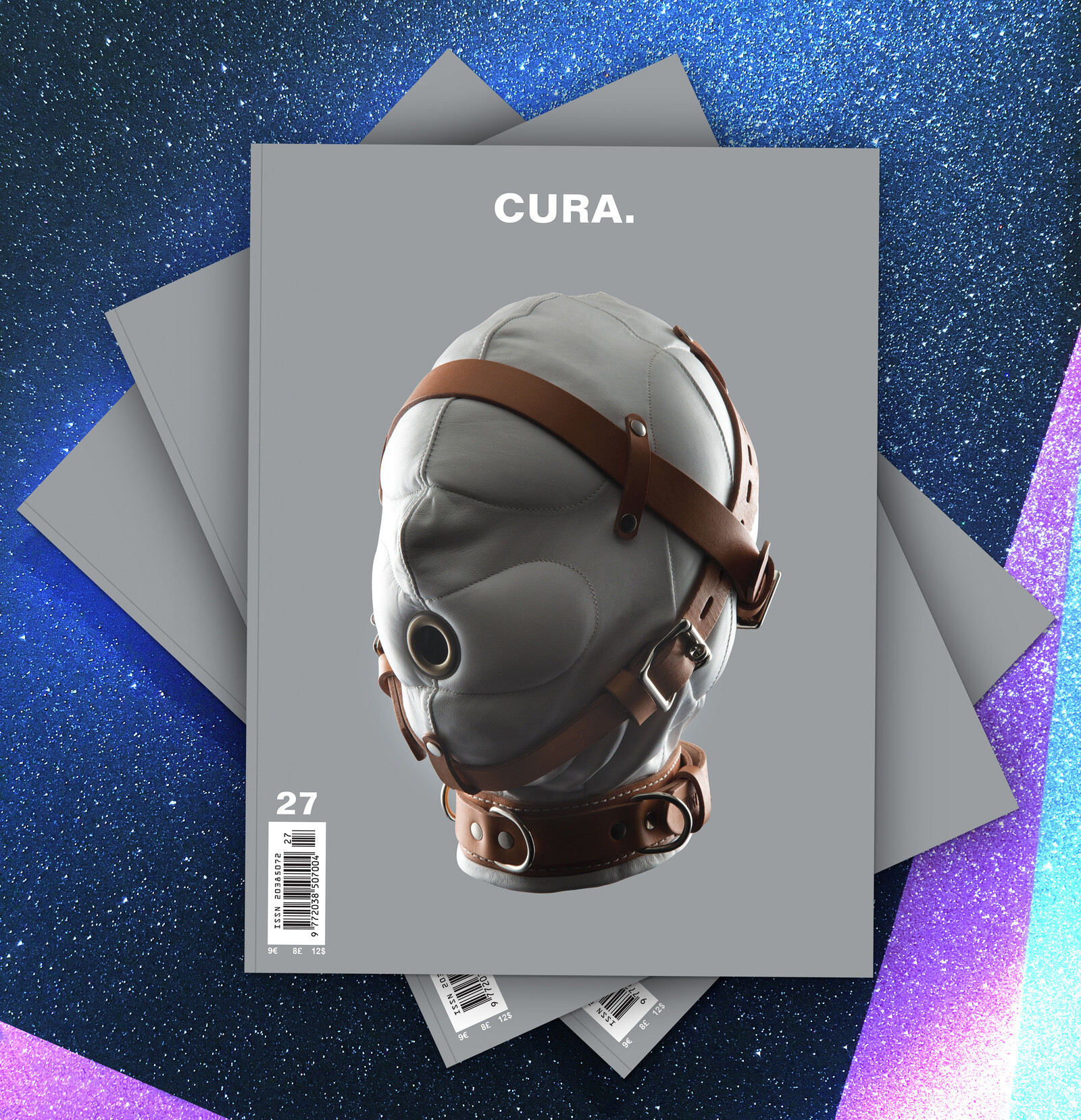CURA. 27
February 20–May 30, 2018
A brand-new, yearlong investigation aims to bring us into the sinuous folds of the body: body as a revolutionary field, as a space for antagonism and freedom, as an area of self-definition, questioning new identities, gender, race, and humanity. Body/antibody dichotomy expresses the relation between presence and absence, disclosure and concealment, materiality and virtuality.
Featuring a cover by George Henry Longly, launched for the event of his solo show at Palais de Tokyo in Paris, the curator Adélaïde Blanc investigates the strategies by which Longly questions presentation systems and visual codes; while Milovan Farronato focuses upon the artist’s work on epidermal surfaces, Lucia Pietroiusti initiates a discourse on implosion, collapse, and fall. All texts explore the complexity of Longly’s work, creating an intense dialogue with a series of enigmatic masks, created especially for the occasion.
Starting his new section, Mathieu Copeland talks about anti-bodies within the body of art institutions; in dialogue with Hans Ulrich Obrist, Barbara Hammer explains how the human body can become a space of freedom, action, and disruption; Vincent Honoré speaks with Eleanor Antin about her seminal work, CARVING: A Traditional Sculpture (1972), and her recent CARVING: 45 Years Later (2017); Ellen Blumenstein’s seven exemplary artworks, here accompanying Kate Cooper’s images, reflect upon the body as “an interface in which subject and collectivity meet and the scenario in which the relationship between the two elements is negotiated”; Ben Vickers’ conversation with Kenric McDowell extends their dialogue on the AI and the broader impact and cooperation between human and machine; Marianna Simnett, introduced by Maitreyi Maheshwari, presents a visual essay of bodies and their relation to abjection, horror and monstrosity.
The series of conversations continues with Donna Huanca and Venus Lau, discussing the skin and body as sculpted, painted and performed; Chris Sharp examines the corporeal materiality and flexibility of ektor garcia’s work; Piper Marshall’s 25 questions to Eric N. Mack help us identify the main interests of his research on tactile assemblages; fabrics are also the focus of the young artist and designer, Lou Dallas, interviewed by Fiona Alison Duncan; Manuel Solano is the protagonist of an intimate dialogue with João Mourão and Luís Silva, in which he reveals the profound reasons behind a performative work where body is exposed, transformed, and reimagined.
The new series of portraits introduce four different approaches to themes of racial, sexual, and anatomical identities: Wu Tsang—by Noemi Y. Molitor—Christina Quarles—with Claudia Mattos—Andrea Crespo—with Alise Upitis—and Tabita Rezaire—by Oulimata Gueye.
The HOT! section is devoted to three hot artists: Cooper Jacoby (introduced by Annie Godfrey Larmon), Carly Mark (by Katja Horvat), and Nicholas Cheveldave (by Lennart Wolff).
The first issue of CLUBBING fanzine, guest-edited by Martha Kirszenbaum, is also launched on the occasion of CURA. 27, including Dick Jewell with Jesse McKee, Fleur Breteau’s extract, Samuel Kirszenbaum photos, and an original downloadable mix by Palestinian DJ SAMA. The fanzine is available for the international distribution and subscribers only.
You can find CURA. 27 in the best international bookshops in Italy and abroad, order your copy on CURA. website or find it at upcoming art fairs: The Armory Show (New York, March 8–11), Independent (New York, March 8–11), miart (Milan, April 12–15), Art Brussels (19-22 April), Frieze New York (New York, May 3–6). Or pass by our BASEMENT ROMA space and buy one.



